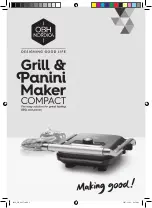
FOR YOUR SAFETY- ALL TOOLS
W
WA
AR
RN
NIIN
NG
G
: When using electric tools, basic safety precautions should always be
followed to reduce risk of fire, electric shock, and personal injury, including the
following:
R
RE
EA
AD
D A
AL
LL
L IIN
NS
ST
TR
RU
UC
CT
TIIO
ON
NS
S..
1.
K
KE
EE
EP
P W
WO
OR
RK
K A
AR
RE
EA
A C
CL
LE
EA
AN
N
. Cluttered areas and benches invite injuries
2.
C
CO
ON
NS
SIID
DE
ER
R W
WO
OR
RK
K A
AR
RE
EA
A E
EN
NV
VIIR
RO
ON
NM
ME
EN
NT
T
. Don’t expose power tools to rain.
Don’t use power tools in damp or wet locations. Keep work area well lit.
3.
K
KE
EE
EP
P C
CH
HIIL
LD
DR
RE
EN
N A
AW
WA
AY
Y
. All visitors should be kept away from work area. Do
not let visitors contact tool.
4.
S
ST
TO
OR
RE
E IID
DL
LE
E T
TO
OO
OL
LS
S
. When not in use, tools should be stored in dry, and
high or locked-up place – out of reach of children.
5.
D
DO
ON
N’’T
T F
FO
OR
RC
CE
E T
TO
OO
OL
L..
It will do the job better and safer at the rate for which it
was intended.
6.
U
US
SE
E R
RIIG
GH
HT
T T
TO
OO
OL
L
. Don’t force small tool or attachment to do the job of a
heavy-duty tool. Don’t use tool for purpose not intended, for example, don’t
use circular saw for cutting tree limbs or logs.
7.
D
DR
RE
ES
SS
S P
PR
RO
OP
PE
ER
RL
LY
Y
. Do not wear loose clothing or jewelry. They can be
caught in moving parts. Non-skid footwear is recommended when working
outdoors. Wear protective hair covering to contain long hair.
8.
U
US
SE
E S
SA
AF
FE
ET
TY
Y G
GL
LA
AS
SS
SE
ES
S
. Also use face or dustmask if operation is dusty.
9.
S
SE
EC
CU
UR
RE
E W
WO
OR
RK
K
. Use clamps or a vise to hold work. It’s safer than using your
hand and it frees both hands to operate tool.
10.
D
DO
ON
N’’T
T O
OV
VE
ER
RR
RE
EA
AC
CH
H
. Keep proper footing and balance at all times.
11.
M
MA
AIIN
NT
TA
AIIN
N T
TO
OO
OL
LS
S W
WIIT
TH
H C
CA
AR
RE
E
. Keep tools sharp and clean for better and
safe performance. Follow instructions for lubricating and changing
accessories. Keep handles dry, clean, and free from oil and grease.
12.
L
LO
OC
CK
K O
OF
FF
F T
TO
OO
OL
L
when not in use, before servicing, and when changing
accessories.
13.
R
RE
EM
MO
OV
VE
E A
AD
DJ
JU
US
ST
TIIN
NG
G K
KE
EY
YS
S A
AN
ND
D W
WR
RE
EN
NC
CH
HE
ES
S
. Form habit of checking to see
that keys and adjusting wrenches are removed from tool before turning it on.
14.
A
AV
VO
OIID
D U
UN
NIIN
NT
TE
EN
NT
TIIO
ON
NA
AL
L S
ST
TA
AR
RT
TIIN
NG
G
. Don’t carry tool with finger on switch.
15.
S
ST
TA
AY
Y A
AL
LE
ER
RT
T..
Watch what you are doing. Use common sense. Do not
operate tool when you are tired.
16.
C
CH
HE
EC
CK
K D
DA
AM
MA
AG
GE
ED
D P
PA
AR
RT
TS
S..
Have defective switches replaced by authorized
service center. Do not use tool if switch does not turn it on and off.
17.
D
DO
O N
NO
OT
T O
OP
PE
ER
RA
AT
TE
E
portable electric tools near flammable liquids or in
gaseous or explosive atmospheres. Motors in these tools normally spark, and
the sparks might ignite fumes.
18.
B
BE
E A
AW
WA
AR
RE
E
that this tool is always in an operating condition because it does
not have to be plugged into an electrical outlet. Keep the switch control lever
in the lock “OFF” position, as shown in Figure 5c, when you are not using the
tool.
19.
C
CA
AU
UT
TIIO
ON
N::
When drilling or driving into walls, floors or wherever “live”
electrical wires may be encountered, DO NOT TOUCH ANY FRONT METAL
PARTS OF THE TOOL! Hold the tool only by the plastic handle to prevent
shock if you drill or drive into a “live” wire.
SAVE THESE INSTRUCTIONS FOR FUTURE USE
1

































